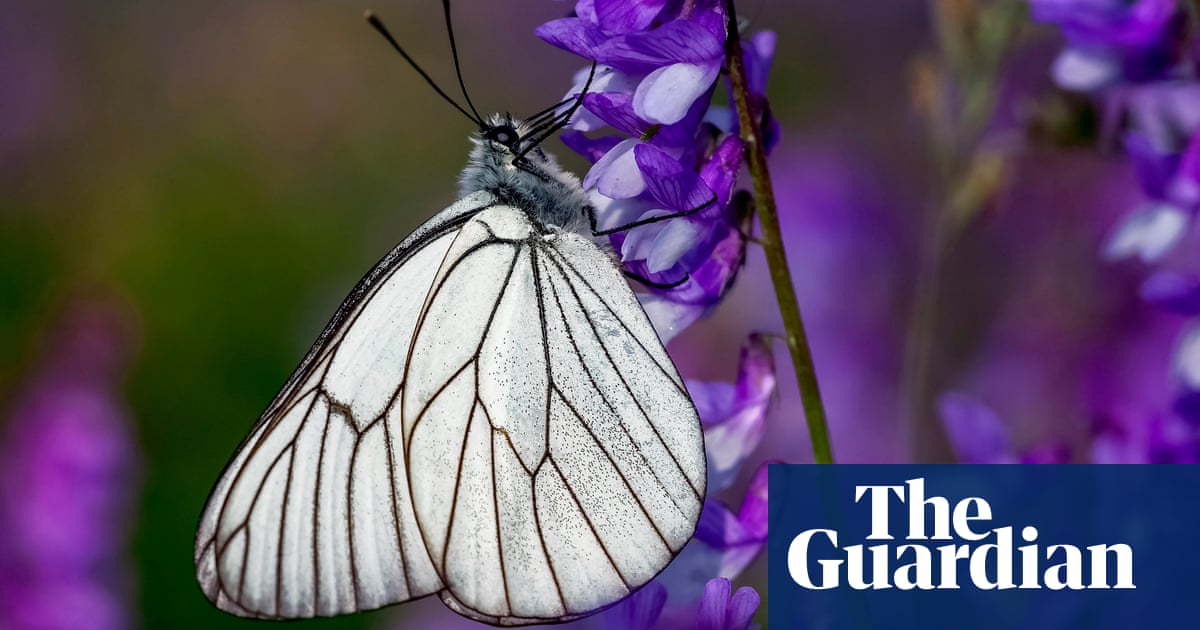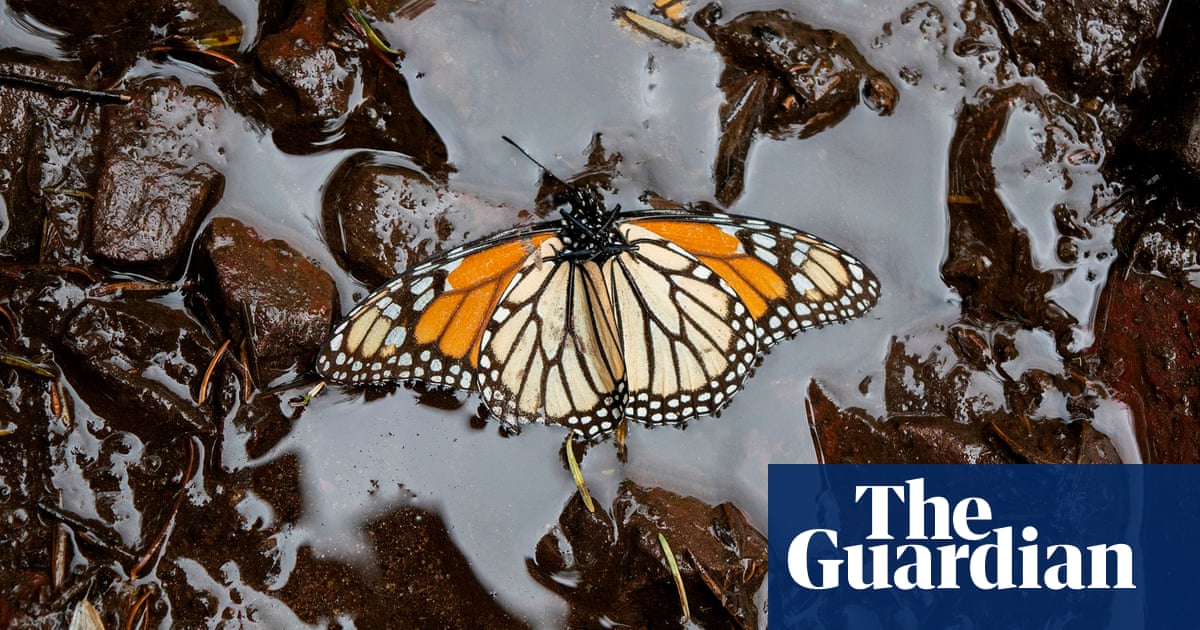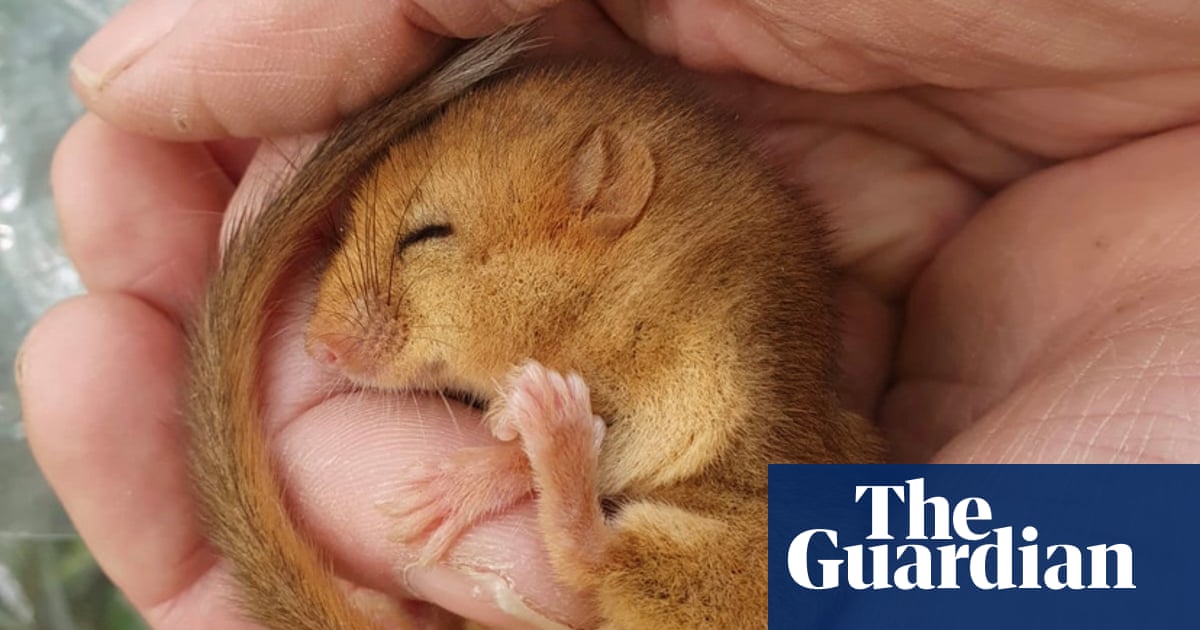
Olaf grasps Diane Barber’s gloved hands with his sticky, four-fingered legs. His skin is bumpy and moist, the colour of pebbles at the bottom of a river when dappled sun hits them. Olaf’s eyes are deep amber. His body lifts and falls with each breath. “The males get really pretty,” says Barber, ectotherms curator at Fort Worth zoo in Texas. “Sometimes they’ll turn a solid yellow when they’re in breeding form.”
In some ways, this toad shouldn’t exist at all. He is the progeny of an egg from a captive mother and sperm from a wild father – a hybrid from parents who were both dead. Olaf is not the first amphibian to be born via IVF – that has been happening for years – but he is the first to be born from sperm that was frozen and thawed.
“We were able to recover a genetic lineage that had disappeared, so we were able to produce an offspring from dead parents,” says Andy Kouba, an ecologist at Mississippi State University, who assisted with the project. “So that was an exciting first, to reintroduce genetic lines back into the population.”
Scientists have a lot of tools to conserve species, says Kouba, but they still need to hedge against extinction in the wild. One way could be to bank the genetic lineages of species by freezing sperm and egg deposits and then later thawing and combining them in a dish to create offspring.
Amphibians are at the forefront of an uphill battle against extinction, losing a greater proportion of species than any other vertebrate group. The IUCN estimates that at least 41% of amphibians are at imminent risk of extinction. Habitat loss, climate crisis and a fungal disease all play a role in their demise.
But amphibians are not the only species that can benefit from new technologies. In vitro fertilisation, hormone therapy and cryopreservation are increasingly being used as tools for conservation – for amphibians and beyond. In a fast-changing world, frozen zoos may be the places where tissues are kept, in the hope of boosting numbers or resurrecting species in the future.
Frozen zoos
How did Olaf come to exist at all? A year ago in Puerto Rico, researchers captured six male toads, injected them with hormones and then collected the sperm they ejected when they urinated. The toads usually pee when picked up by humans, but the researchers also barked at them, Kouba explains, as toads urinate when frightened, and dogs barking are a sure-fire way to scare them. The males were then released back into the wild.
The team of international scientists preserved the semen in liquid nitrogen and transported it to Fort Worth zoo, where female toads were injected with hormones to release eggs. Olaf and his roommates were created in a dish, eliciting cheers from the scientists when they hatched from their eggs.
The idea of creating a frozen zoo first emerged in the 1970s, when a medical pathologist named Kurt Benirschke started banking animal sperm and eggs at San Diego zoo in the same way that human gametes were starting to be stored: in giant vials of liquid nitrogen that dropped the temperature of the materials to -196 F. When Benisrschke started banking genetic material, no technology existed to make use of it, but he believed it was important to carry on anyway.
Now, biobanks for animal species – from fish to reptiles to birds and even snails and molluscs – are popping up around the globe. The Frozen Zoo repository at San Diego zoo holds more than 10,000 cell cultures from nearly 1,000 different species. They are mostly from mammals, but also from birds, reptiles and amphibians.
Scientists had been working on the process of bringing together sperm and egg outside the bodies of animals like rabbits and guinea pigs since the 1870s. But making babies in a test tube is no simple task because every species is different. IVF success rates for mammals are much higher than with reptiles, and with some species, it’s incredibly low. Even within species, some cells are more difficult than others. When it comes to amphibians, Kouba says, their sperm is pretty simple to freeze – but eggs are not, because they are so much larger than the sperm. “Inside that cell, you have water content, and when you start to freeze anything with water, they form ice crystals that rupture the cell.”
Because fish such as salmon and cod are widely available commercially, they have been studied much more than amphibians, and amphibian researchers like Barber and Kouba are waiting for breakthroughs that they can adopt. “There is a huge interest in freezing sperm to move genetics around the world for commercially viable species,” Kouba says.
One reason that conservationists want to boost the numbers of amphibian populations is because diseases are devastating them in the wild. Kouba says cryopreservation has a place as a last-ditch effort to bank the remaining genetic material from a dying species, but that it is really better to take action before a species’ numbers have crashed. “We can produce tens of thousands for reintroduction, which may allow a species to return to a healthy population,” he says.
That’s because amphibians have a naturally high mutation rate, so sending thousands of amphibians into the wild to mate and repopulate could mean they create a disease-resistant strain on their own. “You release animals with the hope that disease resistant lines will develop, and those animals will reproduce,” says Kouba.
Healthy herds
In Colorado, Jennifer Barfield is using IVF to create bison with healthy genes to introduce into existing wild herds. Left to their own devices, bison breed well but what they can’t do is move around the globe – so to transport new genes to different areas requires the use of IVF.
Using assisted reproductive technologies, she has helped produce healthy Yellowstone bison from ones that had a bacterial disease called brucellosis and established a new conservation herd in Colorado called the Laramie Foothills Bison Conservation Herd.
There is another advantage to using IVF in bison says Barfield. “Bio-banking the genetic preservation is just a good idea, like a form of genetic insurance. You never know how science will advance to use that material in the future.”
She says that one of the challenges in endangered species is that often researchers don’t know enough about the reproductive physiology of rare animals to apply solutions before the animals become extinct. “You can’t experiment on endangered species,” says Barfield.
In some species, assisted reproduction is the last hope. There are only two remaining northern white rhinos left in the world, both female, both past reproductive age. Last year, researchers were able to harvest eggs from one of the females and have created three embryos with frozen sperm from dead males. The embryos are now frozen, with the hope of implanting them into surrogate southern white rhino females later this year. The eventual goal is to create five animals that could live in the wild in Africa – a plan that could take decades to come to fruition.
Back at Fort Worth zoo, Barber carefully puts Olaf back in his cage in the isolation room. In the wild, Puerto Rican crested toads like Olaf spend 95% of their time in small holes between crushed rocks, coming out to feed at night and when it rains. In his home at the zoo, the staff have constructed small pyramids made from sections of white PVC pipes for Olaf and the other toads to hang out in. Of the toads that used to live in this room, 193 were recently shipped via FedEx back to Puerto Rico for reintroduction; now more are being raised here. Other rooms house frogs raised from other parts of North America, all in need of a population boost.
Barber says that in the 1980s zoos thought of themselves as arks. “That was kind of the buzz word for zoos: we’re becoming arks instead of just having animals for exhibit. We need to start doing more about thinking about conservation and maintaining species long term.”
But those arks are full, and more species need assistance – there’s no space to keep animals just as an insurance policy. “We’re not arks, we’re life rafts,” Barber says. “And we have very limited seating.”
As she speaks about her passion for overlooked species, Barber’s eyes fill with emotion. “Especially with the stuff that I work with – the creepy crawlies – most people wonder: why should we care? And it’s like, well, we should care about everything because we’re all connected. Sometimes it’s just really hard to communicate why we should care and why it is our responsibility to try to mitigate things that we humans have caused.”
So far, IVF conservation work is only being done with about 10 species – but Kouba predicts it will become much more widespread in the next decade. “I think it’s going to become mainstream,” he says, adding that it could become a primary resource for conservation. “We left those species in the world and we were able to collect their material, bring it back and put new founder lines back in the population, so we don’t need to remove animals from the wild any more.
“That will revolutionise how we manage wildlife.”
This story is a part of Covering Climate Now’s week of coverage focused on climate solutions, to mark the 50th anniversary of Earth Day. Covering Climate Now is a global journalism collaboration committed to strengthening coverage of the climate story.
Find more age of extinction coverage here, and follow biodiversity reporters Phoebe Weston and Patrick Greenfield on Twitter for all the latest news and features












